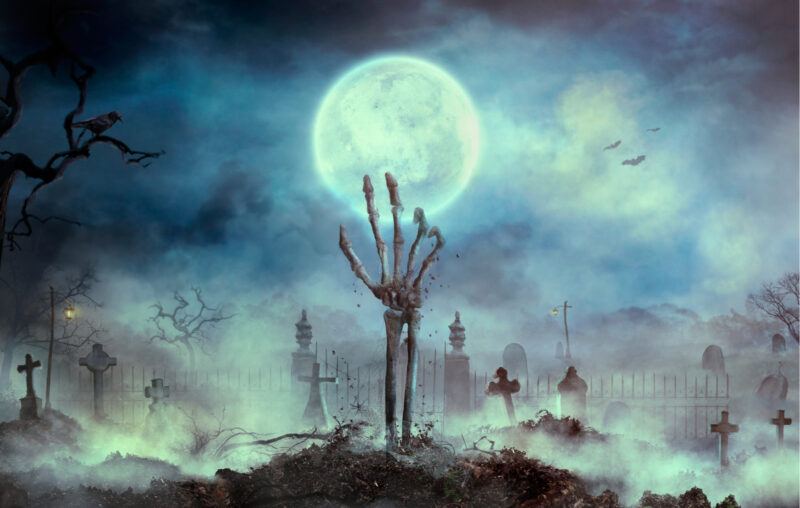Halloweenomics

Having gotten the okay from federal authorities that “Halloweening” can resume this year, various fearsome characters may soon be chanting “trick or treat” again at doors all over America. As a consequence, we will be restarting some excellent illustrations of basic economics
Such an apparent extortion threat seems far from the allegedly dismal science, but in fact, Halloween reflects economics’ central precept that people choose by comparing the benefits and costs they expect to bear as a result of their choices.
For example, modern jack-o-lanterns are carved out of pumpkins for economic reasons. They originated in Ireland as hollowed-out turnips used as lanterns, but pumpkins were more plentiful in America and made better lanterns, so the tradition migrated to pumpkins.
Dark houses and scary costumes originate from benefit-cost comparisons. In the fifth century B.C., Celts celebrated their New Year–Samhain–on October 31. According to legend, on that day the spirits of those who had died during the year searched for living bodies to possess as their only hope of an afterlife. Therefore, people made themselves unattractive “candidates,” to avoid such a fate. Houses were left dark, cold and undesirable, and people dressed ghoulishly to scare away the “shopping” spirits.
Trick-or-treating also has economic roots.
It originated with “souling” in ninth century Europe. On All Souls Day, poor Christians would go door-to-door asking for “soul cakes”–bread studded with currants. The more cakes they received, the more prayers they would say for the donor’s dead relatives. This theological exchange of bread for prayers was viable due to the belief that prayers by the faithful could hasten the passage of the departed into heaven.
Current Halloween practices also reflect economics. Second only to Christmas as a shopping holiday, Halloween generates about $6 billion in sales, reflecting the vast majority of Americans who mark the occasion in some way. It is the biggest payday for candy makers, reportedly accounting for one-quarter of annual candy sales.
Halloween also turned when daylight savings time “falls back” into a major issue, in search of added sales from an extra hour of trick-or-treating. Lobbying led George W. Bush to sign the Energy Policy Act, which took effect in 2007, extending daylight savings time by a week to enable it (Now it ends the first Sunday in November).
Because Halloween is also the biggest night for costume rentals and purchases and behind only New Year’s and the Super Bowl for alcohol sales, sellers in these industries pray for a weekend Halloween so more adult parties will take place. The Halloween Association trade group has even proposed permanently making Halloween the last Saturday in October, to get more economic bang out of the holiday.
Halloween is also one of many children’s first experiences with economic decision-making.
How long should you continue to trick or treat? You stop when the costs in terms of tiredness and sore feet outweigh the benefits of the additional candy. Is it really worth walking to the dentist’s house to get a toothbrush? Which streets should you hit? Such decisions reflect costs (how far do I have to walk?) versus the value of likely treat benefits to them. The number of lights on, the income level and number of kids in the neighborhood all enter this calculation. Children also learn to ask others about the likely loot payoff before choosing their path. Some parents even drive their children to other neighborhoods to increase their trick-or-treat haul.
When are you too old to trick or treat? When the cost of the hassles you get about it outweigh the benefits of the candy and fun you expect.
Children staying with friends Halloween night also learn how markets work, via candy exchange negotiations. I can still remember my amazement at the large number of hard candies one could get in exchange for, say, a Snickers or Reese’s, in trade, at one post-rampage party when I was young.
The economics of Halloween affects others as well. Homeowners learn why the trick-or-treater’s dream–a bowl of candy with a sign saying “take all you want”—doesn’t work very well, except at running you out of candy quickly. Primary school teachers are much more likely to call in sick after Halloween because the children are either still going to be on their sugar high or suffering from the low that follows, and what meager learning will take place doesn’t justify the cost of containing the pandemonium.
In other words, economics is far from dismal; it can shed real insight on every activity in a world of scarcity, including Halloween. In fact, when we extort treats with threats the same month that the federal fiscal year begins, and just before major elections in every even-numbered year, it reminds us of how commonly trick-or-treating describes politics as we are forced to bear it.









